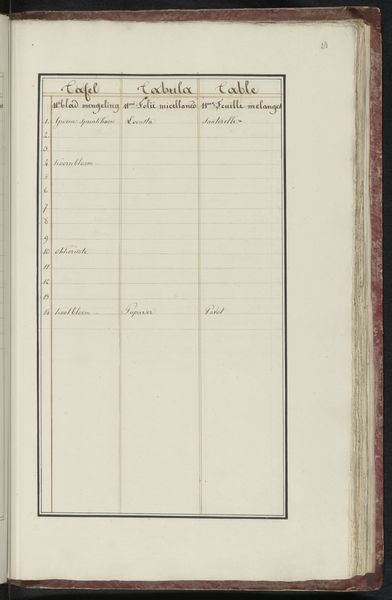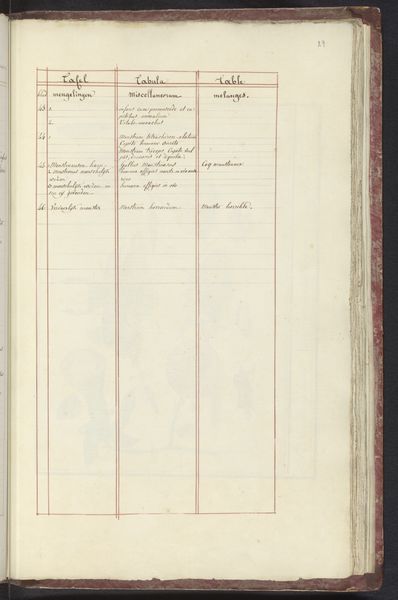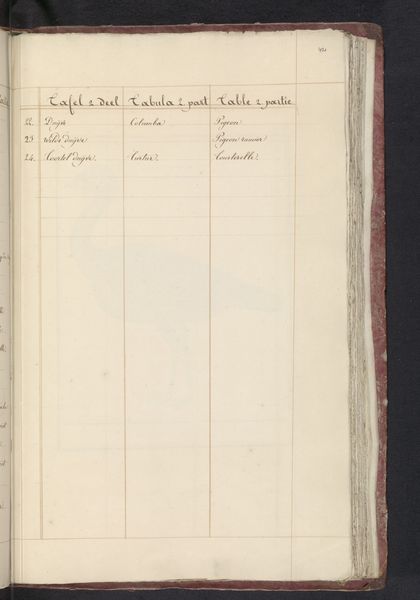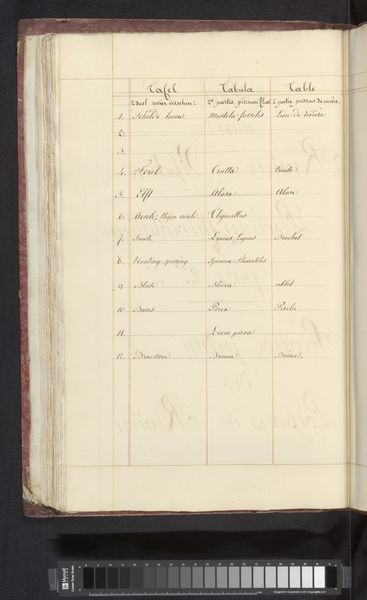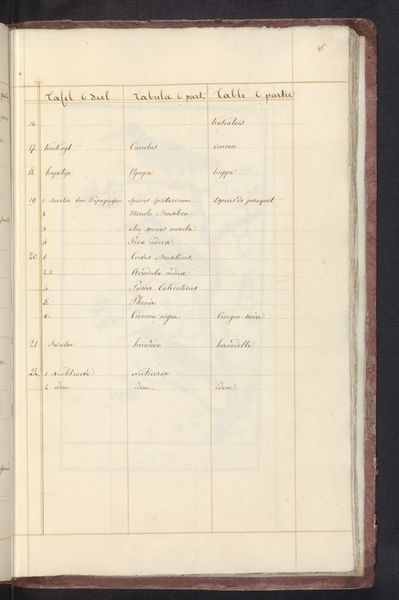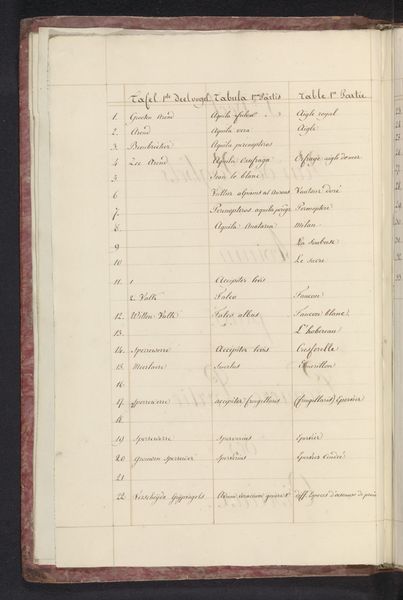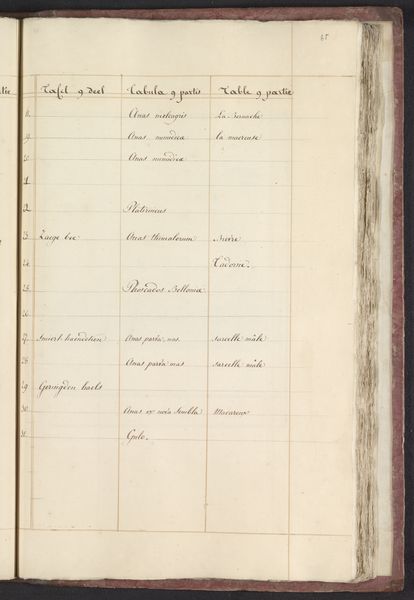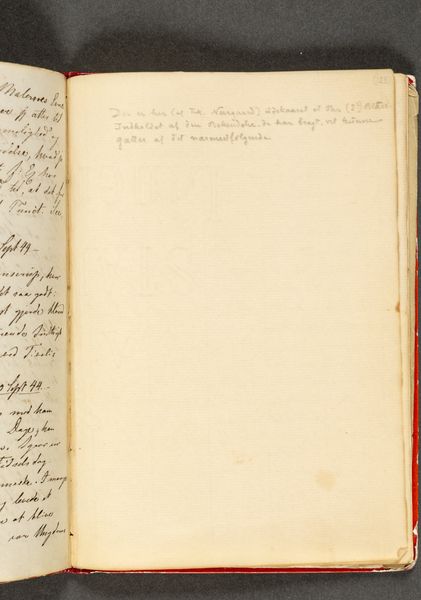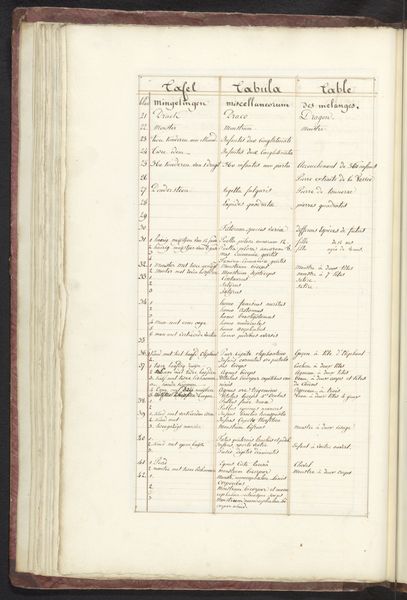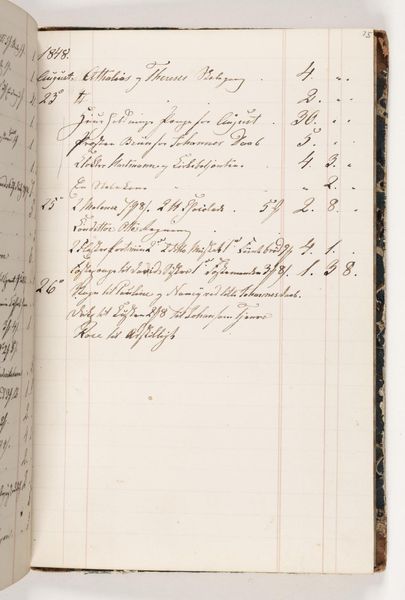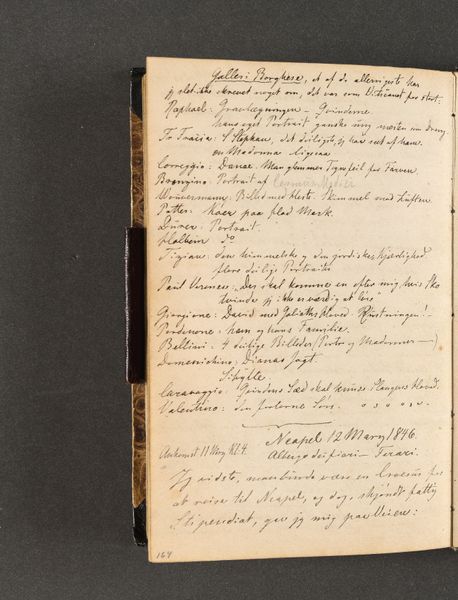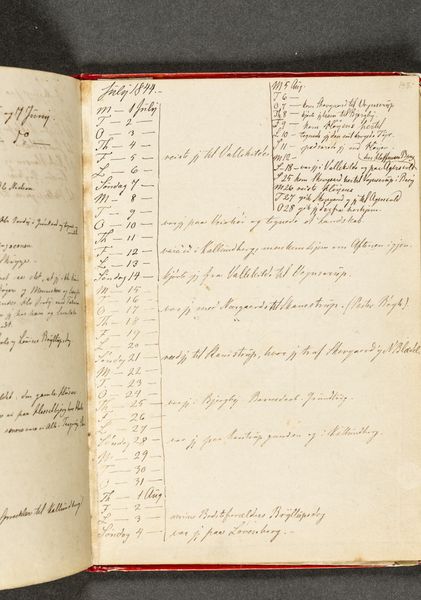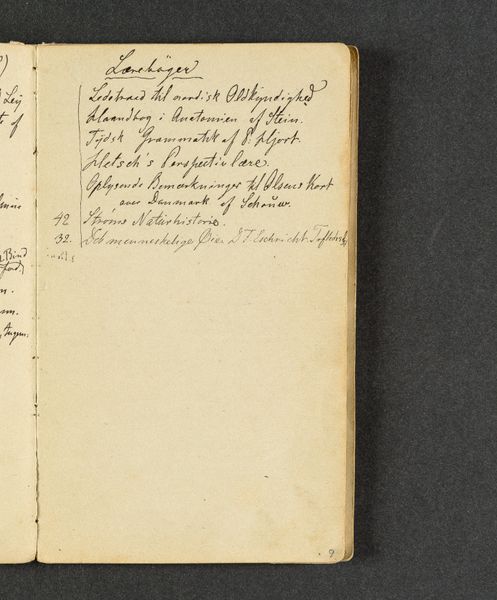
drawing, paper, watercolor, ink
#
drawing
#
neoclacissism
#
landscape
#
paper
#
watercolor
#
ink
#
watercolour illustration
#
watercolor
Dimensions: height 430 mm, width 270 mm
Copyright: Rijks Museum: Open Domain
Editor: So, this is "List of Animals and Plants in the Fourteenth Ensemble" by Joseph van Huerne, made between 1809 and 1814. It’s ink and watercolour on paper. It looks like an open book page, with a ruled table, mostly blank except for a few entries... what strikes you about this work? Curator: I'm intrigued by the labour embedded in this ostensibly simple list. Think about the production of the paper itself, the preparation of the inks and watercolours, and the meticulous act of transcription. What does it signify to carefully categorize flora and fauna during that specific period? Editor: I hadn't considered the process in so much detail. What about the act of categorization itself? Does that speak to any social or political trends of the time? Curator: Absolutely. The period corresponds with increasing colonial expansion. Listing and naming served as methods to exert control, economically as well as culturally over both people and natural resources in distant lands. A list like this embodies a very tangible exertion of intellectual—and ultimately economic—power. How do you think the use of watercolor contributes to this narrative? Editor: Hmm, watercolor feels… less permanent somehow than oil or even detailed engraving. Does that reflect a certain fragility in these colonial endeavors, or maybe just the limitations of the time in documenting these things? Curator: Perhaps both. It may well imply the incomplete nature of understanding and, crucially, of controlling these resources. Consider the incomplete entries. It prompts us to think about what wasn’t or couldn’t be documented, those elements that resisted easy categorization. It reveals, rather than conceals, the limitations of colonial projects. Editor: I see your point, the blanks are almost as important as the filled-in parts. I never thought a simple list could contain so much. Curator: Exactly, questioning the material conditions surrounding even the most apparently straightforward works reveals the social relations which structure our understanding of the world.
Comments
No comments
Be the first to comment and join the conversation on the ultimate creative platform.
